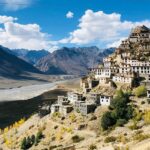The Churdhar Wildlife Sanctuary, located in the Sirmaur district of Himachal Pradesh, is a retreat for nature enthusiasts and thrill seekers. Established in 1985, this sanctuary spans 56 kilometres and encircles the majestic Churdhar Peak, also known as Choordhar. Standing tall at an elevation of 3,647 meters (11,965 feet) above sea level, it ranks among the peaks in the Himalayas. This sanctuary is home to a range of flora and fauna, including species unique to the Himalayan region, offering awe-inspiring views of the surrounding peaks.
Churdhar Wildlife Sanctuary Location
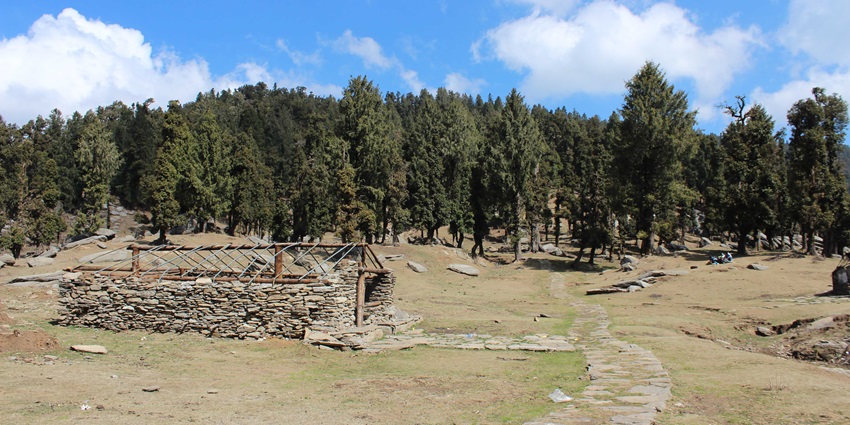
Photo: Anilthakur878 / Wikimedia Commons
Churdhar Wildlife Sanctuary is in the Sirmaur district of Himachal Pradesh, India. It lies approximately 120 kilometres from Shimla, the state capital, and about 85 kilometres from Solan. The sanctuary is situated in the Shivalik range of the Himalayas, straddling the border between Sirmaur and Shimla districts.
Suggested Read: Wildlife Sanctuaries In Himachal Pradesh To Visit On Your Upcoming Trip
How To Reach Churdhar Wildlife Sanctuary
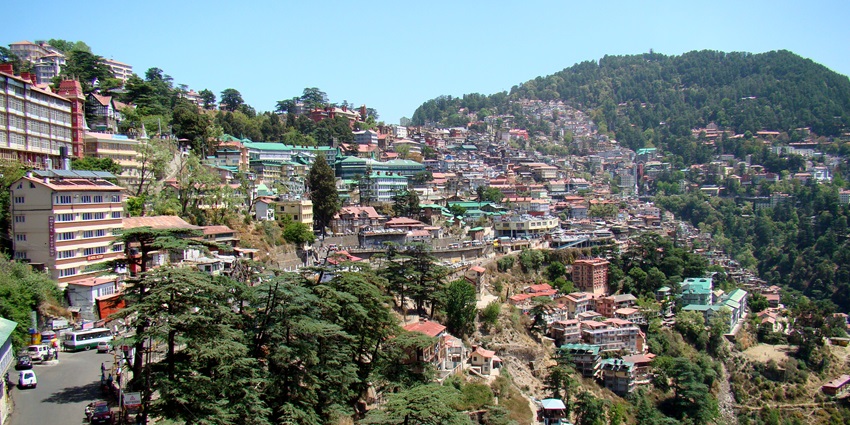
Photo: Bjørn Christian Tørrissen / Wikimedia Commons / Image For Representation Only
Churdhar Wildlife Sanctuary is accessible by road, followed by a trek to the main sanctuary area.
By Road: From Shimla or Solan, one can drive to Nohradhar, the base for the trek to Churdhar. Public buses and private taxis are available to Nohradhar.
By Air: The nearest airport is Shimla Airport, about 135 km from Nohradhar. From there, one can hire a taxi to reach the base camp.
By Rail: The nearest major railway station is at Kalka, approximately 140 km from Nohradhar. From Kalka, one can take a bus or taxi to reach the base camp.
Places To Visit Churdhar Wildlife Sanctuary
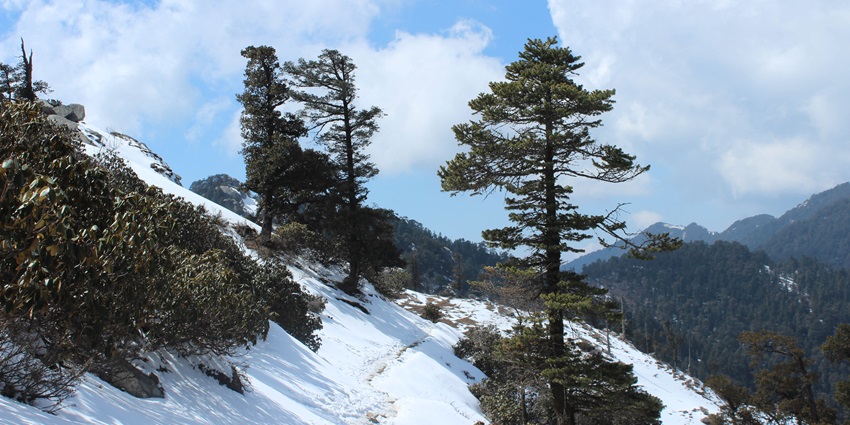
Photo: Anilthakur878 / Wikimedia Commons / Image For Representation Only
Churdhar Wildlife Sanctuary and its surroundings offer a blend of natural beauty and spiritual significance. Here are some notable places to visit in and around the sanctuary:
1. Churdhar Peak
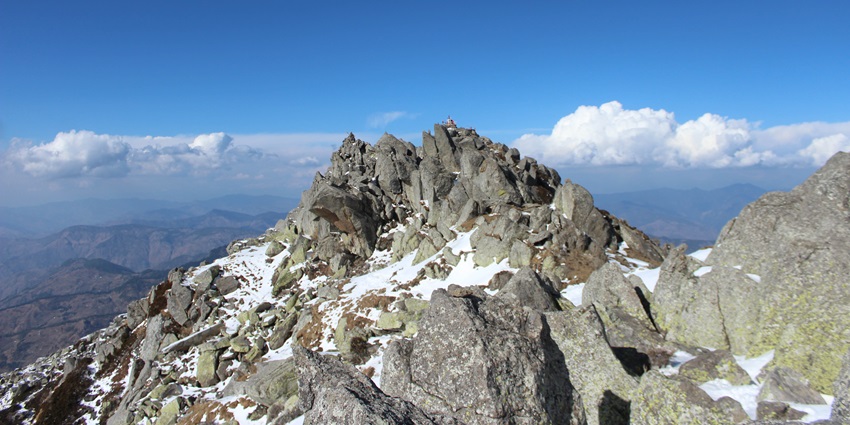
Photo: Anilthakur878 / Wikimedia Commons
Churdhar Peak, the crown jewel of the sanctuary, offers a challenging yet rewarding trek for adventure enthusiasts. Standing at 3,647 meters, it provides panoramic views of the Gangetic plains and the snow-capped Himalayan ranges. The peak is also known as “Chardhaar” due to its four-sided view. A small temple dedicated to Lord Shiva sits atop the peak, adding spiritual significance to the natural beauty. The trek to the summit takes visitors through dense forests, alpine meadows, and rocky terrain, offering a diverse hiking experience.
Timings: Accessible during daylight hours
Entry Fee: Fee
Suggested Read: Trekking In Great Himalayan National Park
2. Chureshwar Mahadev Temple
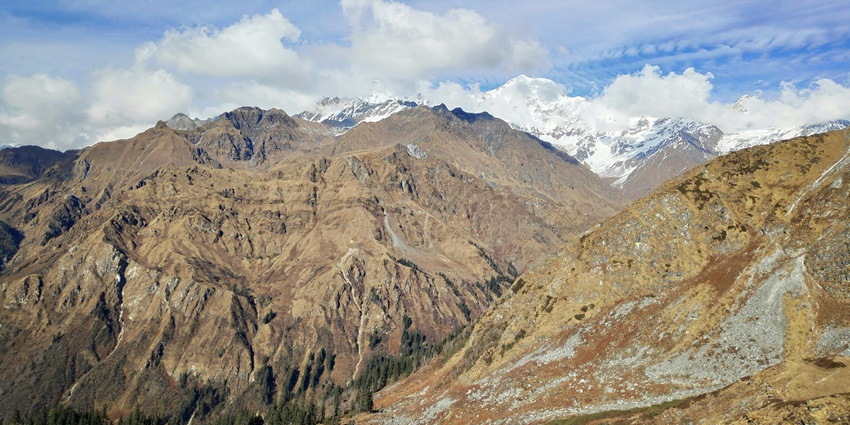
Photo: Saravanan Rajaraman / Unsplash / Image For Representation Only
Chureshwar Mahadev Temple, located near the summit of Churdhar Peak, is a revered shrine dedicated to Lord Shiva. According to legend, the temple marks the spot where Shiva meditated. The small stone temple, surrounded by the rugged mountain landscape, exudes a serene and spiritual atmosphere. Pilgrims and trekkers visit the temple to seek blessings and enjoy the peaceful ambience. The challenging journey to reach the temple adds to its allure, making it a significant destination for both spiritual seekers and adventure enthusiasts.
Timings: Dawn to dusk
Entry Fee: Free
3. Nohradhar
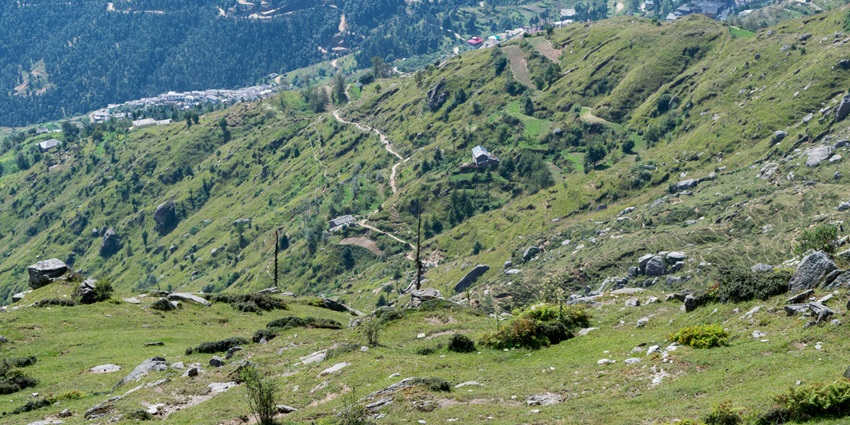
Photo: Ashish Gupta / Wikimedia Commons
Nohradhar, the base camp for the Churdhar trek, is a quaint village that serves as the gateway to the sanctuary. Surrounded by lush deodar forests, it offers a peaceful retreat before embarking on the challenging trek. The village provides basic amenities and is known for its friendly locals. Visitors can explore the surrounding pine forests, interact with local shepherds, and acclimatise to the altitude. Nohradhar also offers stunning views of the surrounding valleys, making it a destination in its own right.
Timings: Open year-round
Entry Fee: None
Suggested Read: Top Offbeat Places In Himachal Pradesh For Fresh Mountain Air
4. Haripurdhar
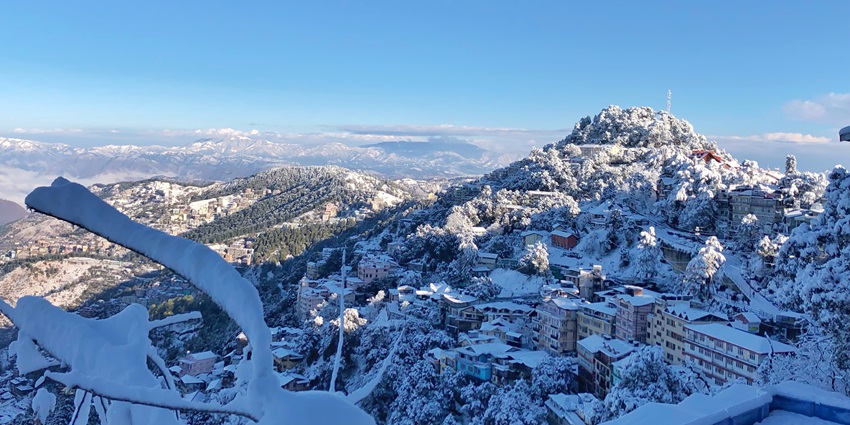
Photo: UnpetitproleX / Wikimedia Commons / Image For Representation Only
Haripurdhar, a small town near Churdhar, is known for its ancient Maa Bhangayani Temple. The temple, dedicated to Goddess Durga, is an important pilgrimage site in the region. The town offers an alternative route to Churdhar Peak, providing a less crowded trekking experience. Haripurdhar’s location provides panoramic views of the surrounding mountains and valleys. The town’s serene atmosphere and local culture offer visitors a glimpse into the traditional Himalayan way of life.
Timings: Open year-round
Entry Fee: None
5. Renukaji Lake
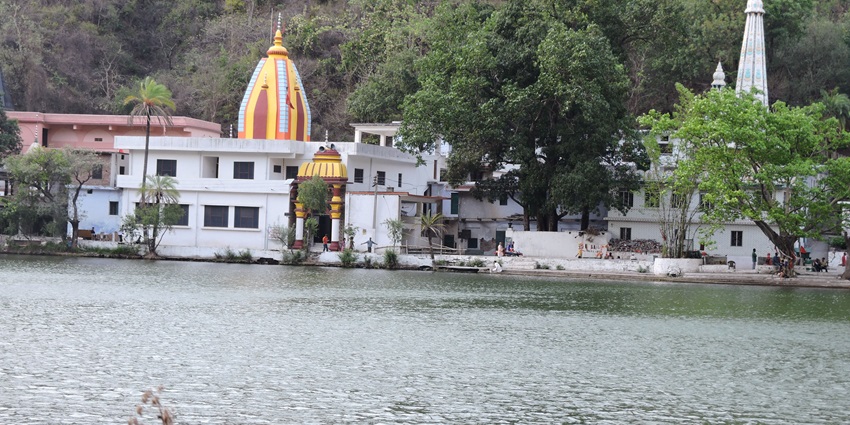
Photo: Harvinder Chandigarh / Wikimedia Commons
Renukaji Lake, the largest natural lake in Himachal Pradesh, is located about 40 km from Nohradhar. The lake, shaped like a reclining woman, is believed to be the embodiment of Goddess Renuka. Surrounded by lush hills, the lake offers boating facilities and is home to various aquatic species. The nearby Renuka Wildlife Sanctuary adds to the area’s ecological significance. The serene environment around the lake provides a perfect spot for relaxation and picnics, making it a popular side trip for visitors to Churdhar.
Timings: Open all day
Entry Fee: Boat rides have a nominal fee
Suggested Read: Top Things To Do In Himachal Pradesh
Where To Stay
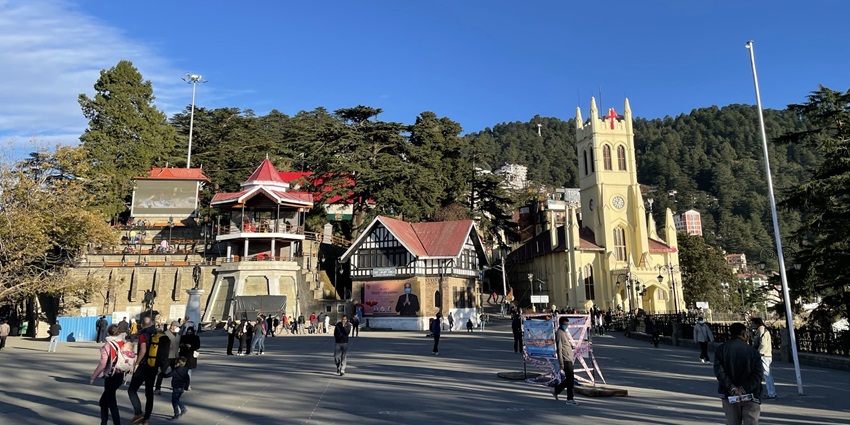
Photo: Slyronit / Wikimedia Commons
Accommodation options near Churdhar Wildlife Sanctuary are limited, reflecting its remote and pristine nature. The most common option for visitors is to stay in Nohradhar, the base camp for the Churdhar trek. Here, you’ll find basic guesthouses and a Forest Rest House that provide simple amenities. These accommodations offer a rustic experience, allowing visitors to immerse themselves in the local environment.
For those seeking slightly more comfort, the nearby town of Solan offers a range of hotels and guesthouses. Some trekkers camp en route to Churdhar Peak, but this requires proper equipment and preparation.
Where To Eat
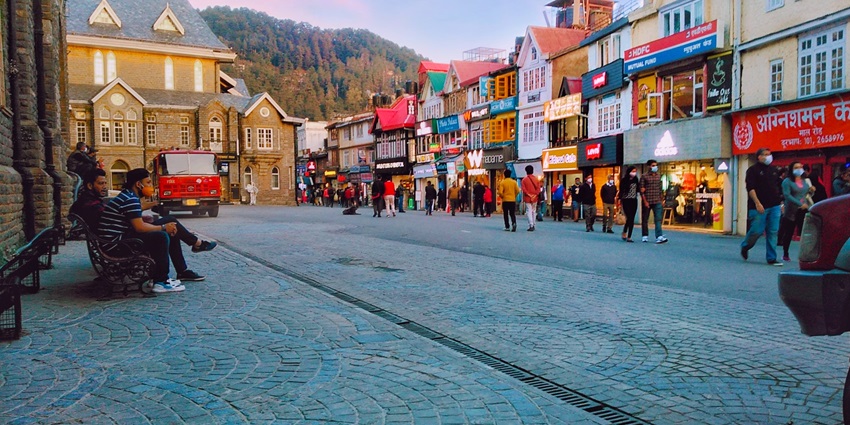
Photo: Virusism / Wikimedia Commons / Image For Representation Only
Dining options around Churdhar Wildlife Sanctuary are modest and reflective of the area’s remote location. In Nohradhar, small local eateries and dhabas serve simple, hearty Himachali cuisine. These establishments offer rajma-chawal (kidney beans with rice), local deals, and roti. Some guesthouses in Nohradhar provide meals for their guests, often featuring home-cooked local specialities.
During the trek, it’s essential to carry sufficient water and energy-rich snacks, as no eateries are along the trail.
Suggested Read: Explore The Majestic Forts In Himachal Pradesh To Relive The History Again
Best Time To Visit Churdhar Wildlife Sanctuary

Photo: Ashish Gupta / Wikimedia Commons
The best time to visit Churdhar Wildlife Sanctuary is from April to June and September to November. The weather is generally clear and pleasant during these months, which is ideal for trekking and wildlife observation. Summer (April to June) offers warm days and cool nights, perfect for exploring the sanctuary and enjoying the alpine meadows in bloom. The post-monsoon months (September to November) provide crisp air and clear skies, offering spectacular views of the surrounding Himalayan ranges.
Other Things To Consider
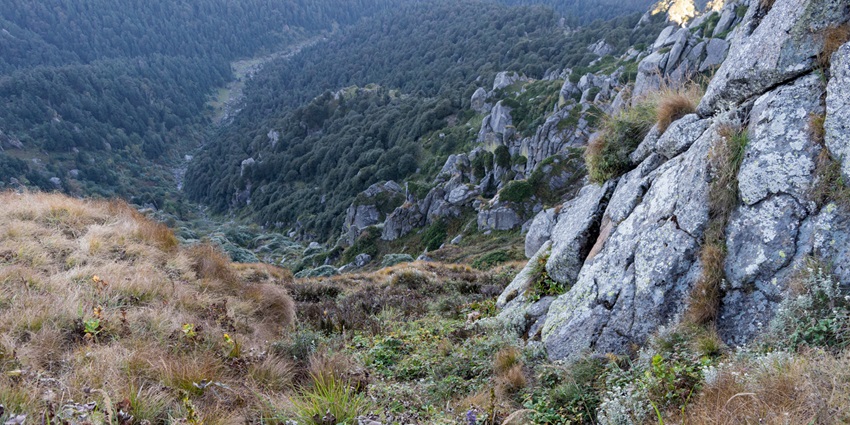
Photo: Ashish Gupta / Wikimedia Commons
Average Cost Of The Trip
The cost of a trip to Churdhar Wildlife Sanctuary can vary depending on individual choices and the level of preparation. The Churdhar Wildlife Sanctuary’s entry fee is nominal, typically around INR 50 for Indian nationals and slightly higher for foreign visitors. Accommodation in Nohradhar can range from INR 500 to INR 1500 per night, depending on the type of lodging.
Tips For The Travellers
- Acclimatise properly before attempting the trek to avoid altitude sickness.
- Carry warm clothing, as temperatures can drop significantly at higher altitudes.
- Wear sturdy trekking shoes and carry a walking stick for the challenging terrain.
- Respect wildlife and maintain a safe distance from animals.
- Carry sufficient water and energy-rich snacks for the trek.
- Clicking photos at Churdhar Wildlife Sanctuary is allowed. Bring a good-quality camera to capture the scenic beauty.
- Pack a first-aid kit and any personal medications.
- Respect local customs and dress modestly when visiting temples.
- Carry sufficient cash, as ATM facilities are not available in remote areas.
- Be prepared for basic facilities and limited connectivity in the sanctuary area.
Suggested Read: Explore The Natural Beauty Of Chandratal Wildlife Sanctuary In Himachal Pradesh
Churdhar Wildlife Sanctuary is a serene escape for nature lovers, offering breathtaking views and diverse flora and fauna. Whether trekking through lush forests or seeking peace in the Himalayas, Churdhar provides a perfect retreat. Ready to explore this hidden gem? Plan your Churdhar Wildlife Sanctuary adventure with TripXL today and enjoy a seamless, well-organized experience in one of Himachal Pradesh’s most beautiful sanctuaries.
Cover Photo: Anilthakur878 / Wikimedia Commons


 WhatsApp
WhatsApp
 Twitter
Twitter


